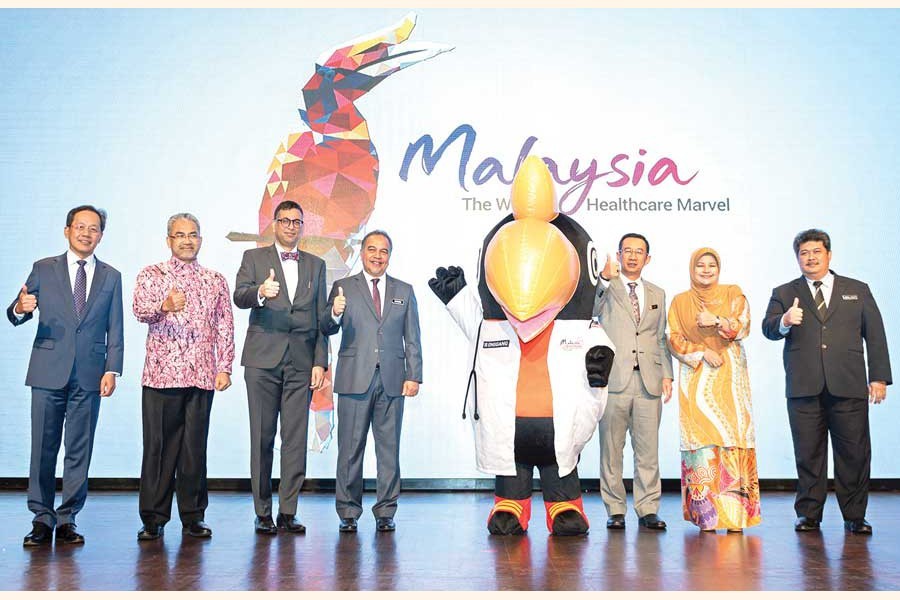The number of overseas healthcare travellers to Malaysia has nearly doubled from the level recorded during the period from 2011 to 2018.
A top Malaysian official attributed this to the good teamwork of their private health sector, government players, immigration department, tourism ministry and airlines.
Malaysia has been able to woo the highest number of overseas patients, followed by the United States, for the unique patient experience it offers.
This is accredited by a combination of award-winning healthcare services and its reputation as a preferred holiday destination, said Malaysian Healthcare Travel Council (MHTC) chief executive officer Sherene Azli.
Malaysia received 1.2 million overseas healthcare travellers in 2018 and the US attracted 0.9 million.
The highest number of patients visiting Malaysia come from Indonesia, followed by Vietnam, Myanmar, Africa, China and India.
Healthcare seekers from Bangladesh, Brunei and the Middle East are also showing interest in visiting the Southeast Asian country.
Over the years, healthcare offerings in Malaysia have been presented as a comprehensive package with all the right ingredients for travellers: world-class quality, easy accessibility and competitive affordability.
Even treatment costs in Malaysia are just one-third of that needed in Singapore.
"The unwavering efforts of our entire value chain have led to the possibility of today. I speak of our dedicated Malaysian private healthcare facilities, government and other industry players…," said Ms Azli.
"Our government stakeholders have built for us a supportive environment in which our industry can thrive: finance ministry through its supportive policies, health ministry through stringent upholding of patient safety standards and many others."
Ms Azli said MyHT2020 is a year-long campaign, which invites everyone to seek health and wellness treatment in Malaysia alongside enjoying tourist attractions.
"The Malaysian immigration office has been strong enough to improvise our world-class healthcare services, especially through eVISA (medical) which was only recently launched."
Joining hands with Tourism Malaysia, MyHT2020 leverages their parent campaign, VM2020, to deliver an impactful identity for Malaysia, Ms Azli cited.
She described Malaysia as a 'healthcare marvel' and said the country is regarded so for strict monitoring by the health ministry.
Private caregivers pledge to deliver world-class medicare attested by agencies like Joint Commission International, Malaysian Society for Quality in Health, Australian Council on Healthcare Standards, and Reproductive Technology Accreditation Committee.
Ms Azli said the affordability of medical services in Malaysia is regulated with ceiling rates governed by health ministry, for the safety and protection of healthcare travellers.
"Access to medical services has virtually no waiting time, due to structured systems adopted by Malaysia's private healthcare providers."
"To add to that," she said, "what makes healthcare services in Malaysia much more attractive is our multilingual Malaysian society who speak a variety of languages for easy communication."
"Our natural geographic wonders, heritage sites and cityscapes are the cherry on the top for patients seeking a relaxing twist to their travel experience."
"As a result, we've seen encouraging growth in the number of healthcare travellers to Malaysia, which is nearly double the number of arrivals between 2011 and 2018," said Ms Azli.
Malaysia Healthcare's dynamic and tremendous achievement as a thriving healthcare travel industry has only been growing steadily over the past 10 years.
Seventy three Malaysia Healthcare member hospitals are all dedicated to delivering satisfying patient experiences. There are 52 ordinary and 21 elite members.
MHTC arranged a visit to some of its elite hospitals during a Media Famtrip organised after launching MyHT2020 on October 31.
The hospitals include Gleneagles Kuala Lumpur, Gleneagles Penang, Island Hospital, KPJ Tawakkal KL, KPJ Damnsara, KPJ Ampang Puteri, Alpha IVF, Ara Damansara Medical Centre, Beverly Wilshire Medical Centre, Fertility Associates.
Others are Mahkota Medical Centre, Pantai Hospital Kuala Lumpur, ParkCity Medical Centre, Penang Adventist Hospital, Prince Court Medical Centre, Sunfert, Subang Jaya Medical Centre, Sunway Medical Centre, Thomson Hospital, Institut Jantung Negara, LokguanLye Specialist Centre.
Of the healthcare facilities, KPJ and Sunway have already opened office in Bangladesh. In Bangladesh, GD Assist is the partner of MHTC to promote Malaysian health tourism.
GD Assist has been working as the official representative of MHTC since 2015 which works only for the elite members.
It provides services like appointment, medical visa, hotel and ticket for the aspiring medical travellers to the elite hospitals in Malaysia.
It also arranges for the second medical opinion before sending the patient to any Malaysian hospital.
According to MHTC data, GD assistant managing director Syed Moinuddin said 18,000 Bangladeshi patients visited various Malaysian hospitals in 2017.
The number of local health travellers has been growing at a rate of 17 per cent annually, he told the FE.
Mr Moin sees huge potential for Bangladeshi patients in receiving treatment there as treatment costs in Singapore are very high that only the rich can afford.
The charge in the elite hospitals is the same for both foreign and local patients unlike in India, Thailand and Singapore who overcharge overseas patients.


